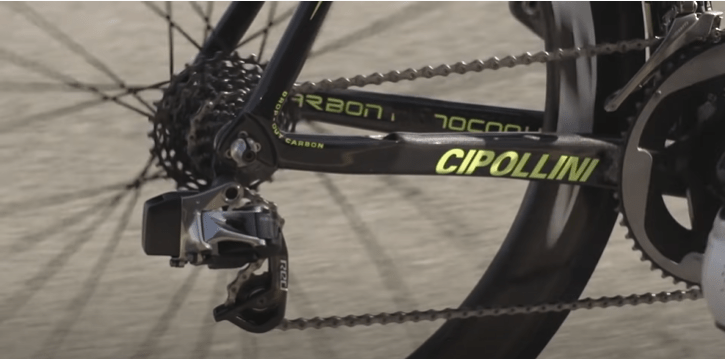

The electric derailleur transmission is a significant technological breakthrough in the cycling industry.
Electric derailleurs gained popularity in the 2010s and have since become more commonly used. However, they are still relatively expensive and are mostly accessible to professionals and cycling enthusiasts who are willing to invest in their gear. Nonetheless, once you try it, you’ll find it to be a comfortable and indispensable addition to your cycling setup.
If you’re considering purchasing an electric groupset, such as Sram Red, wireless Shimano Di2, or Campagnolo EPS, it can be challenging to decide which one is best for you. To help you make an informed decision, I’ll provide a breakdown of the different models available on the market.
The derailleur is a crucial component of your bicycle that should not be overlooked. It plays a vital role in allowing you to adjust your speed, reduce the amount of effort required, and adapt to different terrains and road conditions.
Just like the gear selector in a car, the derailleur on your bike is responsible for shifting gears. If the rear derailleur is not precisely adjusted, your bike’s transmission won’t function correctly, resulting in issues such as incorrect gear shifting or chain derailment.
Sram, Shimano, and Campagnolo are the world’s leading suppliers of bicycle derailleurs. While Campagnolo is renowned for the quality of their equipment, Shimano’s derailleur range offers the best value for money, and Sram holds the record for being the lightest.
It’s essential to avoid mixing parts of different brands in your bike’s transmission to prevent compatibility issues. Even from the same manufacturer, not all models are interchangeable.
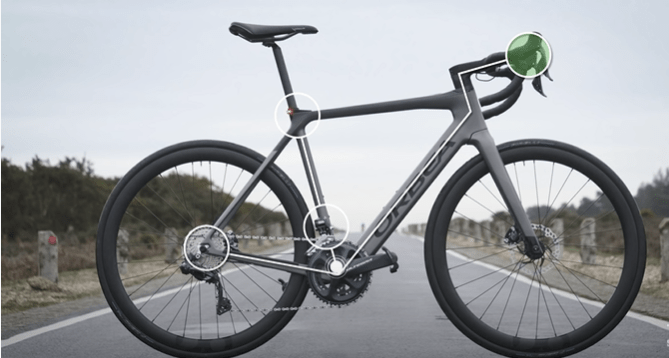

The concept of transmission systems using mechanical derailment was first developed in the 19th century, with the first prototype appearing in 1869. However, it wasn’t until 1912, during the Tour de France, that the derailleur was first introduced to competitive cycling. Unfortunately, it was later banned until 1937 when it was finally permitted again.
Today, electric gearshifts are standard on all bikes used in the Tour de France, having entered the electronic age.
The first wireless electronic transmission was introduced by Mavic in 1999 with its Mektronic system. Work on electric derailleurs began a few years earlier in 1992.
During the 1990s, the Italian firm Campagnolo was also working on this type of derailleur. However, it wasn’t until 2005, when the manufacturer equipped several cyclists participating in the Tour of Italy, that the electric transmission gained significant notoriety.
Shimano released its first model in 2008, followed by the Dura-Ace Di2 the following year.
In 2011, Campagnolo introduced its CTL, which gave birth to the famous EPS. From there, electric derailleurs became a popular trend among cyclists.
Far from being a mere fad, electric derailleurs offer several advantages compared to traditional mechanical transmissions, making them a significant technological advancement in cycling.
Electric derailleurs are revolutionizing the way we shift gears on a bicycle. Let’s take a closer look at how they work.
Shimano’s “Synchro shift” system simplifies gear changing, with everything controlled by one hand. With only one way to change gears, the derailleur automatically selects the appropriate ratio, including changing the chainring if necessary, based on your personalized settings chosen through the application.
You no longer have to worry about setting the cassette in relation to the platter!
Additionally, the system allows for gear changes even when your hands are not resting on the levers, making it incredibly convenient when your hands are in the high position. The adjustments of a Shimano derailleur equipped with this technology are also made easier, providing a more seamless and comfortable cycling experience.
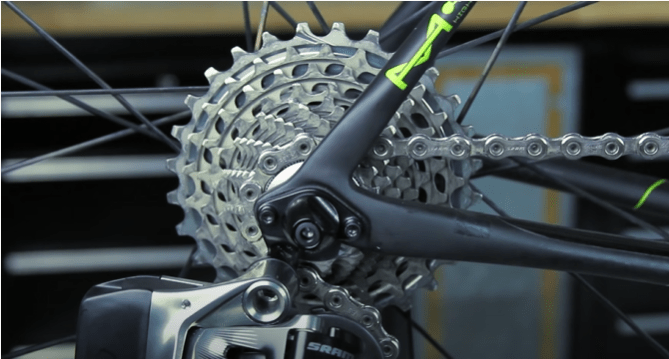

The electric derailleur provides a quick and effortless gear shift. It is done by pressing a button on the shifters, which is twice as fast as a mechanical transmission. It requires less effort as the button is big enough to be easily pressed, even with gloves.
Compared to mechanical derailleurs, electric ones allow you to shift gears on multiple levels simultaneously. Changing three gears, for instance, requires pressing the button three times. Moreover, the electric derailleur is more resistant to elements and does not slow down even in low temperatures.
The chain is protected from friction by automatic alignment, which aligns the front derailleur with the rear derailleur, chainrings, and chain. There is no need for readjustment as indexing is automatic. Frictions and chain crossings are eliminated.
The battery range is long-lasting, which allows for several thousand kilometers before recharging. Disassembling, recharging, and installing the battery is simple and does not happen frequently. However, it is best to check the battery after each ride.
The electric derailleur is also customizable with a smartphone or bicycle GPS. You can personalize the system, geolocate the bike, and benefit from remote assistance. The screen displays the gear position and battery status.
With Shimano’s E-tube project system, you can enjoy automatic gear change based on your pedaling cadence and bike speed.
Cordless electric derailleurs are also practical, with the front and rear derailleurs having their own battery. They are interchangeable and easy to uninstall for charging. The system is easy to mount on the bicycle frame as it does not contain any wiring.
The electric derailleur is also up to 400 grams lighter than the mechanical version, making it more manageable.
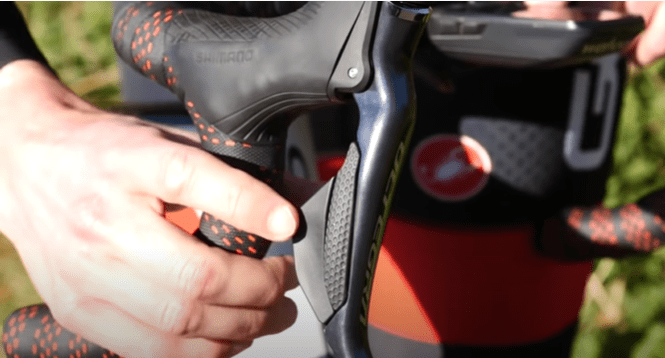

There are very few drawbacks when it comes to using an electric derailleur. While there may be some minor negative points, the benefits of the technology far outweigh them. One potential inconvenience is the need to recharge the battery, which can catch you off guard if you forget to check its condition before a ride. However, most batteries last well over three months, so as long as you remember to check before each ride, it should not be a problem.
The cables of electric derailleurs do not require much maintenance, but installing them can be a difficult task. However, this problem has been resolved with the introduction of wireless models, although they can be expensive.
Some older models from 2012 were susceptible to humidity, but this has been addressed in more recent models. For instance, the Shimano XT Di2 model is commonly used in mountain bikes and has proven to be reliable.
The only significant drawback of electric groups is their cost. They can be quite expensive, and you need to have a substantial budget to equip yourself with one. For example, the Shimano Ultegra Di2 costs at least $1200 more than the mechanical Ultegra, and prices can easily exceed $3500. This makes them a costly investment for most cyclists.


There are three prominent electric derailleur manufacturers on the market, and each has a flagship model with its own unique name:
It’s worth noting that the battery location varies depending on the manufacturer. For example, the Shimano Di2 houses its battery in the seat tube, while the Sram electric range has the battery attached directly to each derailleur.
Electric derailleurs were originally designed for racing bikes, as professional racers required them. The wireless electronic derailleur uses technology similar to Bluetooth to synchronize the elements of the transmission group, and there is no risk of hacking or interference on the racetrack due to the encryption developed by Sram. In addition, racers generally have the means to acquire an electric or electronic group.
However, electric derailleurs are suitable for any speed enthusiast cyclist, regardless of the bike they ride. They are resistant to all environmental conditions, and the risk of accidents is minimal due to the easy-to-control speed.
Electric derailleurs are also suitable for electric bikes, providing the cyclist with optimal comfort. They are lightweight and rigid, and work well with Bosch, Brose, and Yamaha mid-mounted motors. This option is especially suitable for senior cyclists who are passionate about cycling but prefer a less tiring ride. The presence of a motor combined with an electric derailleur offers both more comfort and security.
Ultimately, the decision to purchase an electric derailleur depends on one’s purchasing power. Even if you are an amateur cyclist who rides only a few times a year, there is nothing stopping you from indulging yourself if you have the necessary means.
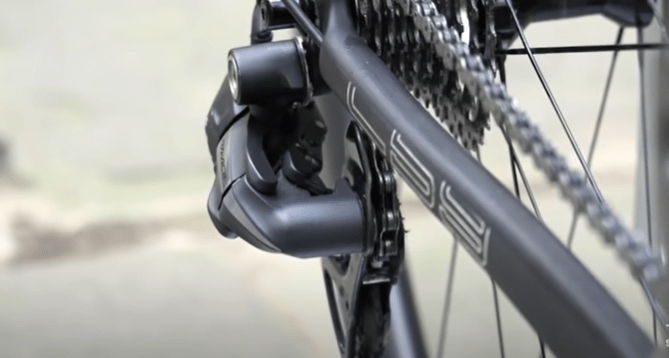

Manufacturers provide a detailed instruction manual for the installation of electric transmission equipment, but the process requires technical expertise and attention to detail, especially when routing the cables through the levers. However, the installation on the frame is relatively straightforward.
If you opt for a wireless derailleur, the installation becomes much easier.
While the installation process of an electric group may seem daunting, with patience and attention to detail, anyone can do it.
The adjustment of the front and rear derailleurs during the installation process is typically the most challenging part for those attempting to change their transmission themselves.
Maintaining an electric derailleur transmission is important for its longevity, and it’s not much different from maintaining a mechanical model.
To ensure optimal performance, it’s essential to regularly clean and lubricate your derailleur. With wireless models like those from Sram, maintenance is even easier since there are no cables or sheaths to lubricate for smooth gear changes. You only need to lubricate the part of the derailleur that touches the chain.
Regularly checking the battery level and charging it before it runs out is also necessary to prevent any surprises during a ride. It’s also important to keep an eye on the condition of the derailleur and cables to ensure they are in good working order. If you notice any issues, it’s best to seek professional help to make any necessary repairs or adjustments.
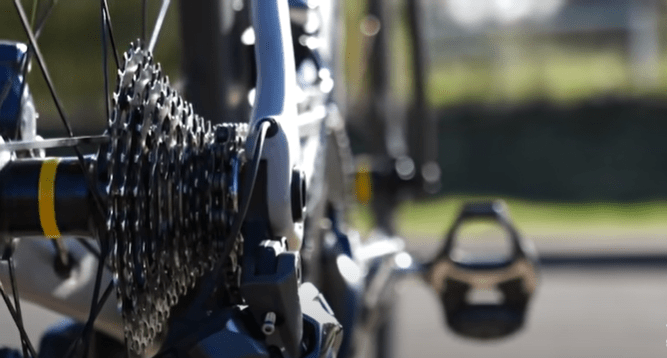

If you’re a casual cyclist or just starting out a traditional mechanical derailleur is a reliable and sturdy option. However, for more experienced cyclists looking for greater comfort and improved performance, an electric model is worth considering. It’s also suitable for those who frequently ride on irregular terrain or over long distances. Keep in mind that maintaining an electric derailleur may require some technical knowledge, but wireless models eliminate the need for cable lubrication.
The benefits of an electric derailleur include automatic indexing for no maladjustment, a quiet transmission, no cable or sheath wear for wireless models, and quick plate changes. For athletes looking to increase their performance, high-end mechanical groups can offer great comfort while remaining more affordable than electric models.
It’s worth noting that as the production of electric derailleurs becomes more accessible and incorporated into mass cycling, their popularity will continue to grow. However, ultimately the choice between mechanical or electric depends on your personal needs and budget.
